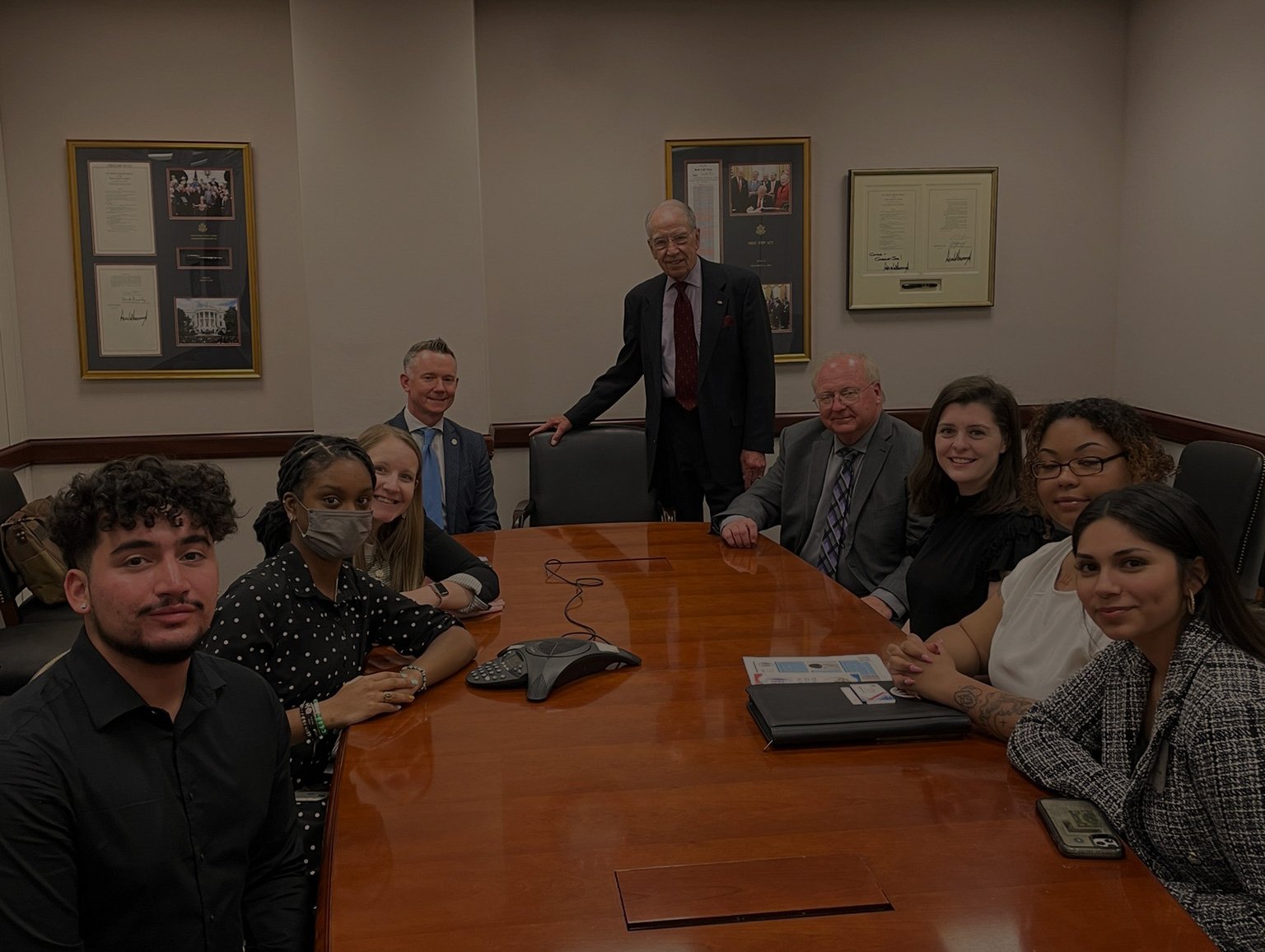A behind-the-scenes playbook to guide foster care advocacy on Capitol Hill
Part 1:
How a Bill Becomes a Law / By the Book
THE SHORT VERSION: Legislation considered by Congress generally can be categorized in one of two ways: bills that Congress must do and advocacy-driven bills. You have an opportunity to influence both! Ready to learn more? Let’s dive in…
The Basics
MUST-DO BILLS
These are the bills that Congress must pass, no matter what. They include:
1) Reauthorization Bills
These are bills that revisit existing programs to determine what, if any, changes need to be made.
FOSTER CARE ADVOCACY SPOTLIGHT:
During this session of Congress, members of the House and Senate need to reauthorize certain federal Title IV-B* programs before they expire in order for federal funding to remain available. In addition to reauthorizing the funding, these programmatic policies should be updated to support best practices and help improve outcomes for children and families.
*Title IV-B refers to the section of the Social Security Act where the program exists in federal law.
2) Budget and Appropriation Bills
These bills determine how much the federal government will spend in a year. They fund programs in every sector (defense, transportation, human services, education, etc.) and add up to trillions of dollars. Appropriation bills must be considered and passed by Congress every year.
FOSTER CARE ADVOCACY SPOTLIGHT:
The budget and appropriations process presents an opportunity for advocates to advance funding options to support transition age youth.
Advocacy-driven BILLS
Hundreds of bills are introduced each year by members of Congress that respond to problems brought to their attention.
These legislative remedies often seek to fix a problem identified by constituents of the program or those with lived experiences (people who see the problem up close in their daily lives). Stakeholders and advocates then advance potential solutions.
FOSTER CARE ADVOCACY SPOTLIGHT:
Your voice matters. Here’s an example:
The Fostering Connections to Success and Improving Adoptions Act passed in 2008. Before this law’s enactment, relatives caring for children and youth in foster care wanted permanency options in addition to reunification or adoption. Grandmothers, in particular, said foster care was disruptive for their grandchildren. But these grandmothers also didn’t want to adopt, because that involves terminating parental rights, which isn’t always in the best interest of the child.
Congress listened and made a law supporting relatives who step in to provide a stable, permanent family for a relative child in foster care. This is referred to as kinship guardianship, a legal form of permanency. The advocacy that led to Fostering Connections continued, led by organizations like Generations United and the American Bar Association. As a result, relative care — also known as “kinship” care — is now widely acknowledged as the most ideal placement outside of the biological home because children and youth in kinship placement have more positive outcomes than those in other placements.

The authorizing committee can then act on the legislation by holding:
HEARINGS: Meetings of the authorizing committee to learn about the problem and hear from witnesses who are familiar with the problem and can provide background and personal experience.
MARKUP: Consideration of the legislation by the authorizing committee where the pros and cons of the proposal are debated, and committee members consider and vote on changes to the bill, known as amendments. The authorizing committee can vote in favor of the bill as amended. If they do, the legislation then moves on to potential consideration by the full legislative body — either the Senate or the House.
Advocates bring problems or challenging issues to the attention of policymakers.
A problem is often identified in the context of an individual's experience, or a group of individuals facing similar experiences.
A member or members of Congress agree to introduce legislation to address the problem.
HOW IT WORKS
Once introduced, that bill is referred to the congressional committee that has jurisdiction over the issue. The bill referral process is entirely behind-the-scenes and is handled by the “parliamentarian” in Congress. The committees that receive bills are called “authorizing committees.”
FOSTER CARE SPOTLIGHT:
For child welfare programs, the authorizing committees are the Senate Finance Committee and the House Committee on Ways and Means.
See Part 2: Congressional Offices and Committees / Personnel is Policy
Once the bill passes, the same process occurs in the other body.
CONFERENCE: When both chambers of Congress have passed similar but not identical bills, members — usually from the House and Senate authorizing committees — meet to work out the differences between the two bills.
It’s also possible that the authorizing committee does nothing to advance the bill. Many bills that are referred to committees receive no action and never advance to a full vote on the floor.
FLOOR ACTION: This is the term used to describe the process where the House or the Senate considers the bill passed by the authorizing committee. At this stage, all members of Congress have the opportunity to attempt to change the bill through amendments prior to voting for or against the legislation.
If there is a conference agreement on one bill, the newly revised bill must then be voted on again by the House and the Senate, and if both bodies pass the identical bill, it goes to the president, who can either sign the bill into law or veto it (i.e., reject it).
take action!
Now that you know the ins-and-outs of how a bill becomes a law, you can get involved to help influence the process. Here are some things you can do right now:
Learn about major child welfare bills Congress has already passed.
Read up! Congress gets A LOT of its information from the Congressional Research Service — a nonpartisan resource run out of the Library of Congress. Advocates should, too!
Monitor the actions of the authorizing committees. Pay attention to hearings.
The authorizing committee will often allow anyone who wants to submit testimony for the committee’s record to do so. This is an excellent opportunity to MAKE YOUR VOICE HEARD! (Reminder: The Senate Finance Committee and the House Ways and Means Committee are the two most important committees for foster care policy.)
Don’t be afraid to reach out to your member of Congress to ask for a meeting to tell your story, elevate problems, and propose solutions.
YOU are an expert, and it could be your life story that captures your legislator’s attention and motivates them to act.
The actual House and Senate chambers are called “the floor.”
All votes on the final passage of a bill happen in person on “the floor.” When staff members are going over to the chamber, they’ll say, “I’m off to the floor.”
There are a lot of rules for staff on the floor. For example: In the Senate, floor staff can only sit on a designated bench. They cannot use electronics. They cannot stand in the “well” where members vote, and they cannot speak too loudly. Any violation of these rules means that staff can be ejected from the floor!
Near the House and the Senate floors are rooms called “cloakrooms.”
The cloakrooms are where members can gather to chat informally with colleagues, read the news, or learn from leadership staff about upcoming amendments. Many a deal is cut in the cloakroom!
Avid C-SPAN viewers may notice senators stopping at a desk toward the back of the Senate chamber during votes. That’s the so-called “candy desk.”
The senator assigned to that desk will keep it stocked with candy and treats for colleagues to grab when entering or exiting the Senate floor.

THE BOTTOM LINE
Amid the mysterious-sounding rooms and candy jars, our lawmakers have many opportunities to connect and exchange ideas throughout their day. It could be your story that's told as lawmakers are persuaded to vote in favor of policies that create better outcomes for foster youth.










